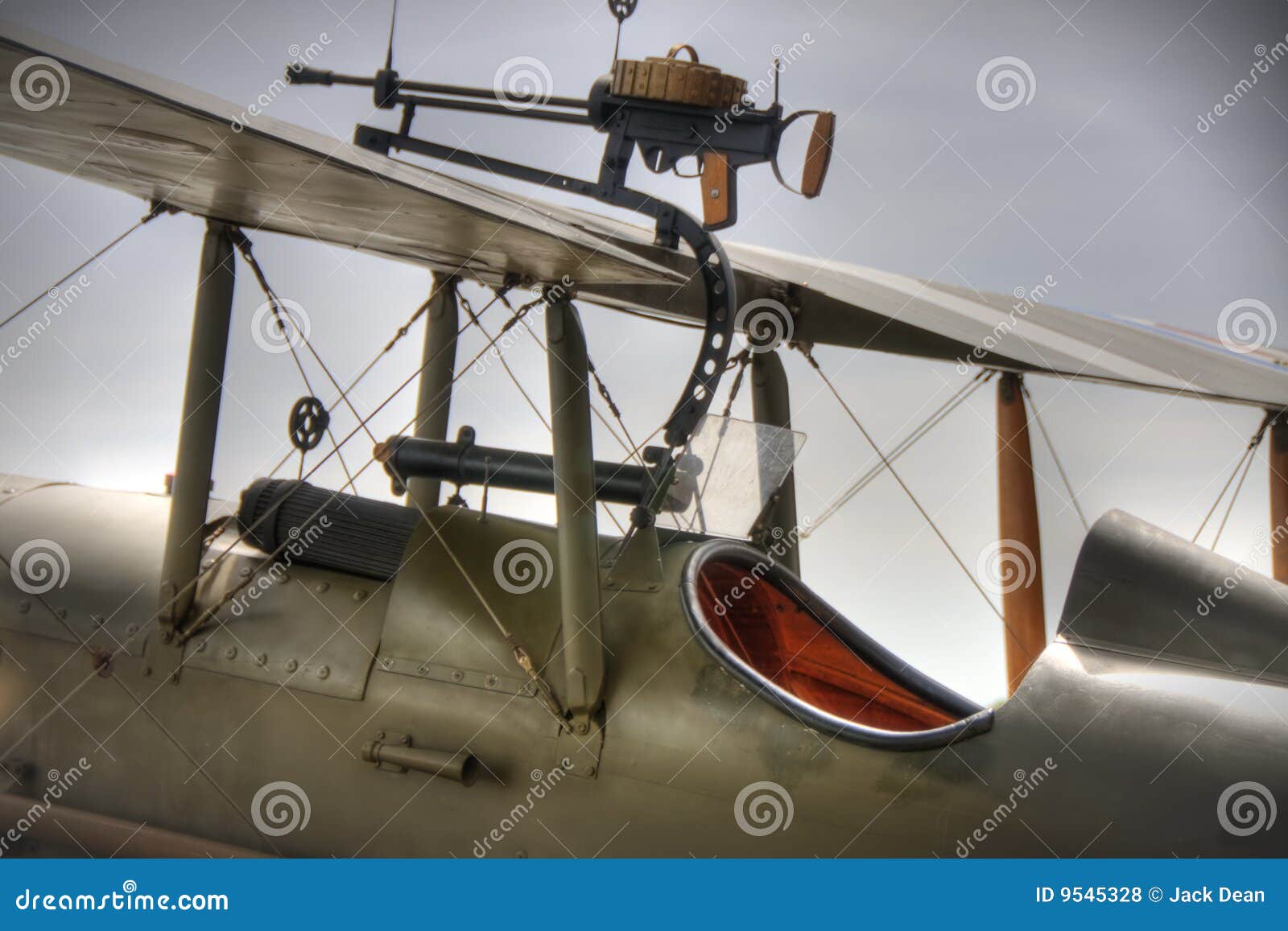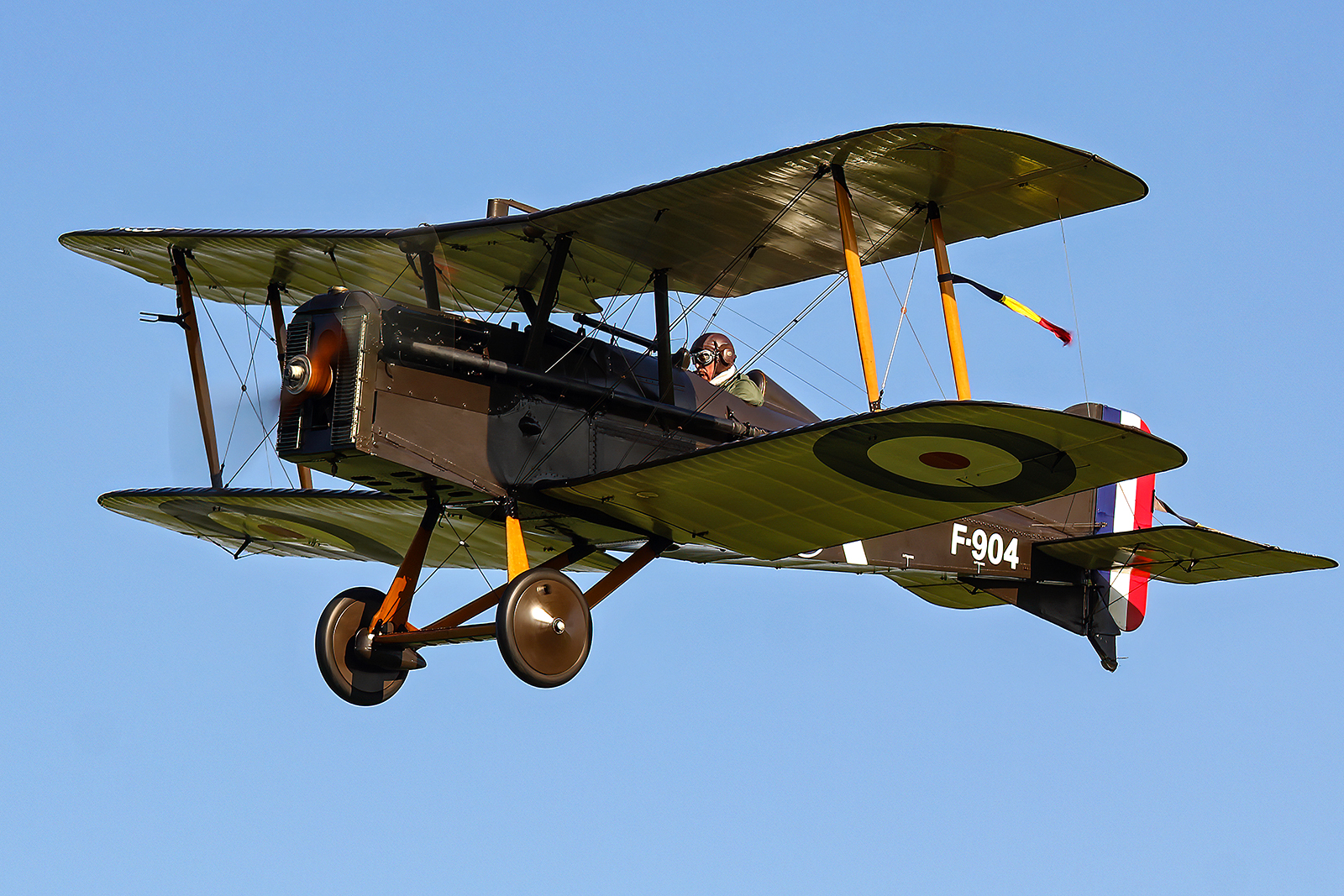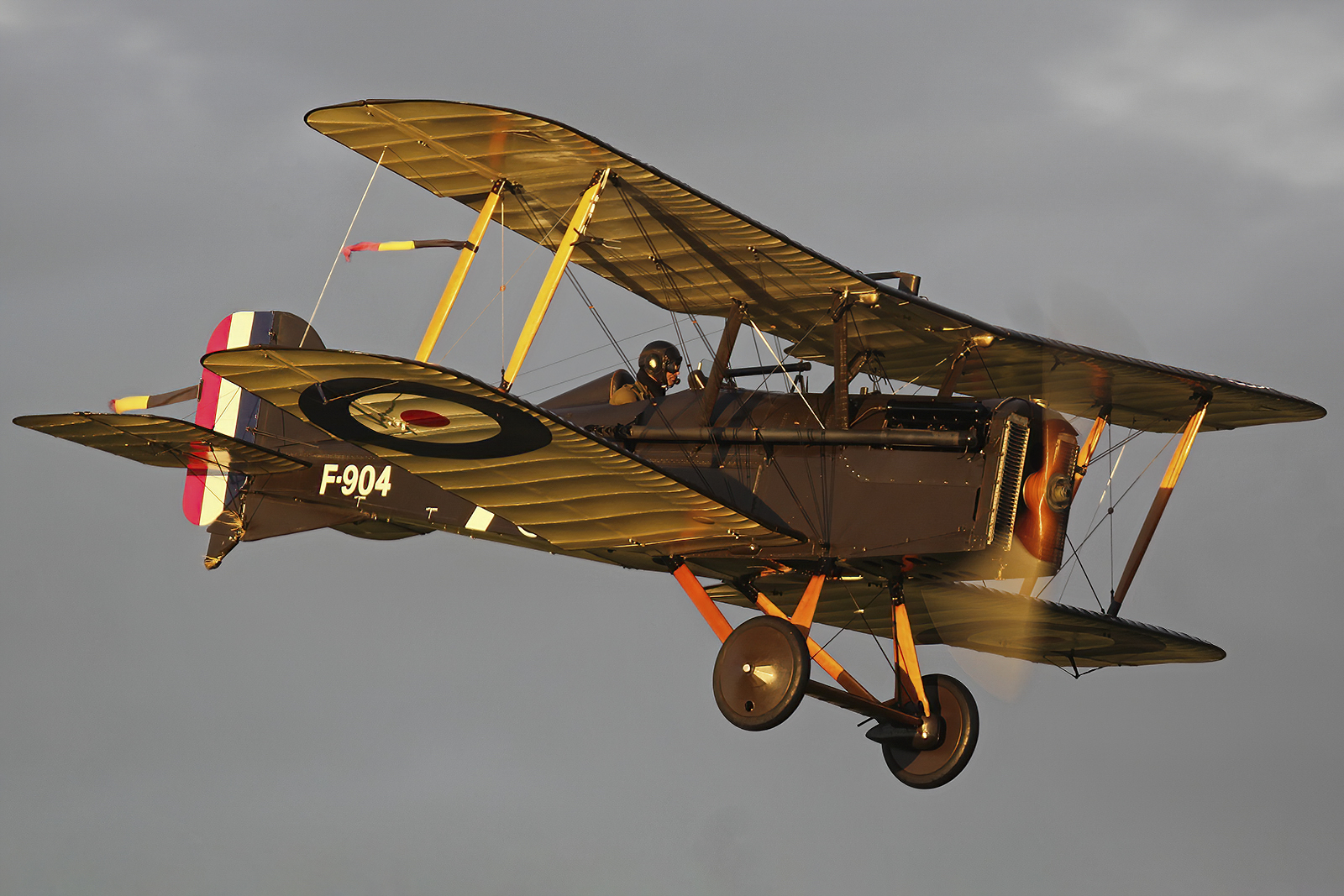S.e.5a Aircraft - Royal Aircraft Factory S.E.5 - Second World War British fighter aircraft. It was designed at the Royal Aircraft Factory by a team including Chris Folland, John Quartey and Major Frank Good. It is one of the fastest aircraft of the war, while being stable and relatively simple. According to aviation writer Robert Jackson, the S.E.5 was: "A powerful fighter described as 'the gun of the First World War'."
In many ways, the S.E.5 was superior to its Sopwith Camel opponent, but it was not responsive to the authorities. Problems with his Hispano-Suiza gina, especially the first editions powered by the HS 8B, meant that the type was not enough until 1918. Therefore, when the first examples reached the Western Front before in the Camel, fewer troops were installed in the S.E.5 than in the Sopwith fighter.
S.e.5a Aircraft

Along with the Camel, the SE5 helped restore Allied air superiority in mid-1917 and maintained it for the remainder of the war, preventing a repeat of the "Bloody April" 1917, when the losses of the Royal Flying Corps were heavier. rather than the Luftstreitkräfte. S.E.5s remained in RAF service for some time after the armistice that ended the conflict; some were transferred to various foreign military units, and a number were taken by civilians.
Eduard 1/48th Scale Se5a Hispano Suiza
S.E.5a aircraft of No. 32 Squadron RAF. During the battle of xor the serial numbers were thrown away but the squadron markings were gone.
The S.E.5 (Scout Experimtal 5) was designed by Chris Folland, John Kworthy and Major Frank Goode of the Royal Aircraft Works, Farnborough. It has a new 150 hp. (112 kW) built around the Hispano-Suiza 8, the V8 was underdeveloped and reliable at first, and performed well. The first of three prototypes flew on November 22, 1916. The first two prototypes were lost in accidents (the first on January 28, 1917, which killed Major Frank Goode, the chief test pilot of the Royal Aviation Works) due to poor wing design. . The third model was modified before production began; The S.E.5 was known in service as a very powerful aircraft, able to dive at very high speeds - the square wings improved control at low speeds.
Like the Royal Aircraft Factory's other important aircraft of the war (B.E.2, F.E.2 and R.E.8) the S.E.5 was very stable, making it a good gunner, but it was quite simple. It was one of the fastest aircraft of the war, at 138 mph (222 km/h), faster than the SPAD S.XIII, and faster than any standard German model. the time. Although the S.E.5 is not as agile and efficient as the Camel in a tight fight, it is much easier and safer to fly, especially for new pilots.
According to 'Dodge' Bailey, the chief test pilot of the Shuttleworth Collection, "it looks similar to the de Havilland Tiger Moth, but more powerful".
Se 5/5a Aces Of World War I: V. 78 (aircraft Of The Aces): Amazon.co.uk: Franks, Norman, Dempsey, Harry: 9781846031809: Books
Only 77 original S.E.5 aircraft were completed before the improved model, known as the S.E.5a, was produced. The first models of the S.E.5a differ from the last models of the SE5 only in the type of engine installed - 200 hp. Powering the Hispano-Suiza 8b is a large four-bladed propeller that rotates clockwise, producing 150 hp. H.S. Example 8A. 5,265 S.E.5s were built by six manufacturers: Austin Motors (1,650), Aeronautical and Engineering Company (560), Curtiss (1), Martinseed (258), Royal Aircraft Factory (200), Vickers (2,164) and Wolseley Motors Limited (431).
Shortly after the United States entered the First World War, plans were made for several American aircraft manufacturers to begin mass production of aircraft in the service of the United Nations, one of which was the S.E.5 . In addition to its order for 38 Austin-built SE5a aircraft, produced in Britain and assigned to equip US Army units formerly assigned to the American Expeditionary Force, the US government placed several orders to the Curtiss Airplane and Motor Company. and providing 1,000 S.E.5s to be produced in America.
However, only one aircraft built by Curtiss would be completed before the start of the conflict, when the demand for the SE5 ended and production was soon halted after another 56 aircraft were assembled by using the parts already provided.

At first, the design of the plane exceeded the limited supply of Hispano-Suiza machines made in France and the team was given to accept the new fighter. By early 1918 Airco had to go with DH 5s and Nieuport 24s. there can be serious problems with the reduction gear, sometimes the propeller (and in rare cases the wheel) will separate from the fuselage and the plane to the plane, a shared problem with the same power Sopwith Dolphin.
Aviation Photographs Of Royal Aircraft Factory Se.5a Replica
A high-performance, straight-engined Hispano-Suiza 8a produced by Wolseley Motors Limited, the 200 hp. (149 kW) The introduction of the Wolseley Viper solved the engine problems of the S.E.5a and was thus used as a prototype. electrical station.
Some of the aircraft were later converted to a two-seater configuration to become trainer aircraft.
The S.E.5b is a variant of the S.E.5, with the nose and upper and lower wings of different lengths and chords. One example, the converted S.E.5a, flew for the first time in early April 1918. It had a rotary on the tail and a lower radiator. Its performance was superior to that of the S.E.5a, with the added drag of the upper wing greatly compensating for the benefit of a simpler fuselage. Not intended for production S.E.5b. In January 1919 it was tested in the standard S.E.5a wing and was maintained in this form as a research aircraft in the early twenties.
The Royal Aircraft Factory S.E.5 is a classic aircraft carrier. The fuselage was a box structure with wire mesh, and the wings were made of wood and ribs. The fuselage was narrower than most modern airplanes, giving the pilot a better view.
Mount Of Aces: The Royal Aircraft Factory S.e.5a (paperback)
The aircraft had a powerful design, which helped to increase the complexity of the type. It was also able to withstand high-g damage and was resistant to damage.
Unlike many of its contemporaries, the S.E.5 was very stable and easy to fly; its stability allows pilots to shoot faster and more accurately at long ranges. It has a significantly lower accident rate than comparable aircraft.
Part of its stability is the large amount of negative destruction. By using the aileron and rudder balance, grip can be added, allowing the elevator to be adjusted to take flight.

The S.E.5 was the first to use the Hispano-Suiza 8 V8 engine and was powered by different motors. The Hispano-Suiza engine emerged from that period, featuring features such as a thin aluminum block with steel lines, double glazing and forced air intakes to aid cooling; Its advantage is that it is easy to control by many pilots, especially when compared to modern rotorcraft. An expansion tank for cooling is integrated into the upper part of the wing.
Walk Around The Royal Aircraft Factory S.e.5a
One of the best things about the Sopwith Camel was its high altitude, making it a better match for the Fokker D.VII that came before the fighter.
The S.E.5 was armed with a single 303-inch Vickers machine gun, unlike the Camel's two, but its wing Lewis gun was also mounted on a Foster mount, allowing the pilot to fire to enemy planes. below.
The arrangement of this armamt was made by the pilots of the first S.E.5 squadron in the new "S. The use of materials for the Vickers machine gun was not reliable at first. The Vickers gun is mounted on the end in the front left rear of the fuselage, with the lugs inside the pilot, in an upward direction. Normally, the spare magazines for the Lewis gun would be placed in most open space in the room, including front areas such as the instrument panel.
Standard instrument sections include compass, altimeter, tachometer, fuel gauge, air speed gauge, temperature gauge, air pressure gauge, fuel chain and air conditioner; These were somewhat difficult to see due to their low mounting position in the aircraft.
Royal Aircraft Factory Se 5a Replica
"Dodge" Bailey, Chief Test Manager of the Shuttleworth Collection, said the S.E.5 pilot was "the best in the world".
It was tucked into the fuselage, making it hard to see the long forward fuselage, but otherwise it was a good view.
Notable changes include shortening the wing to increase maneuverability and removing the bulb to increase the pilot's rear view. James McCudd, ace pilot and former RFC engineer, was known for improving his aircraft for better performance; McCade was able to increase the top speed to 9 mph and raise the service ceiling

Aircraft appraisal online, free aircraft appraisal, aircraft appraisal services, aircraft appraisal cost, aircraft appraisal jobs, aircraft appraisal course, aircraft appraisal training, business appraisal, rolex appraisal, appraisal software, 409a appraisal, aircraft appraisal report
Post A Comment:
0 comments so far,add yours